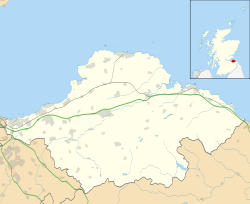Macmerry
| |
|---|---|
 Main Road, A199, Macmerry | |
Location within East Lothian | |
| Population | 1,430 (2020) [1] |
| OS grid reference | NT434723 |
| Civil parish | |
| Council area | |
| Lieutenancy area | |
| Country | Scotland |
| Sovereign state | United Kingdom |
| Post town | TRANENT |
| Postcode district | EH33 |
| Dialling code | 01875 |
| Police | Scotland |
| Fire | Scottish |
| Ambulance | Scottish |
| UK Parliament | |
| Scottish Parliament | |
Macmerry is a village located on the old A1 (now renumbered the A199) just east of Tranent.
Contents
The village has a primary school with a roll of around 100.

There is an industrial estate to the east of the town. Originally this area was part of the RAF Macmerry, also known as Penston, which closed in 1953.
There was a railway branch line until 1960 which served the local coal mines.
